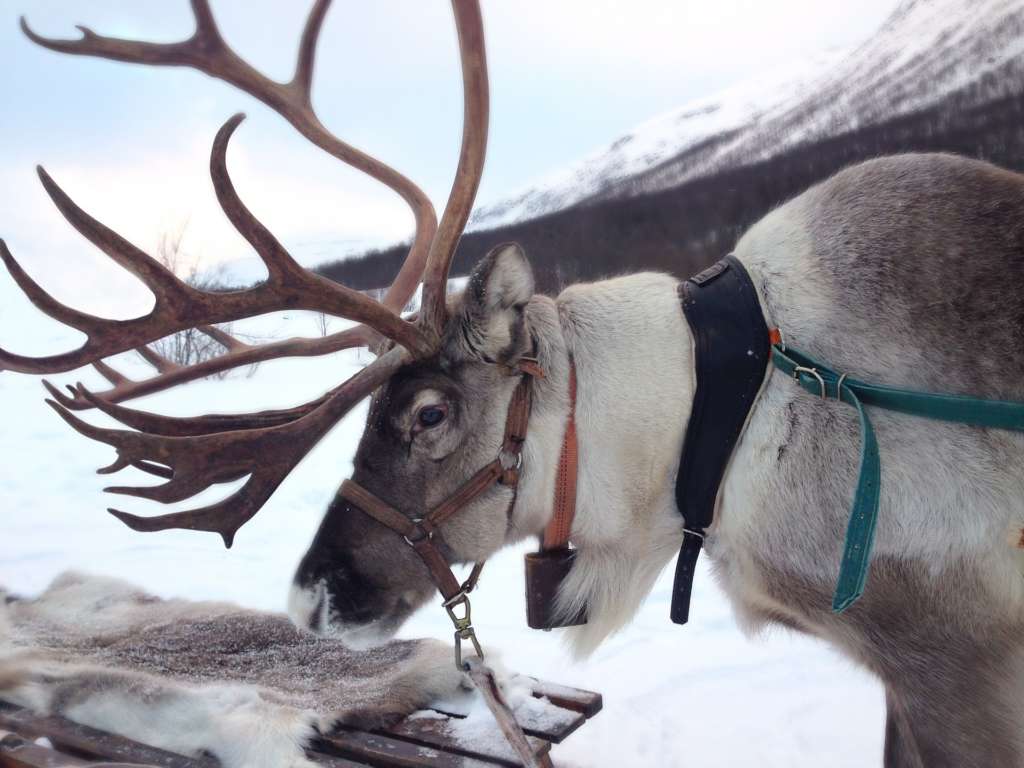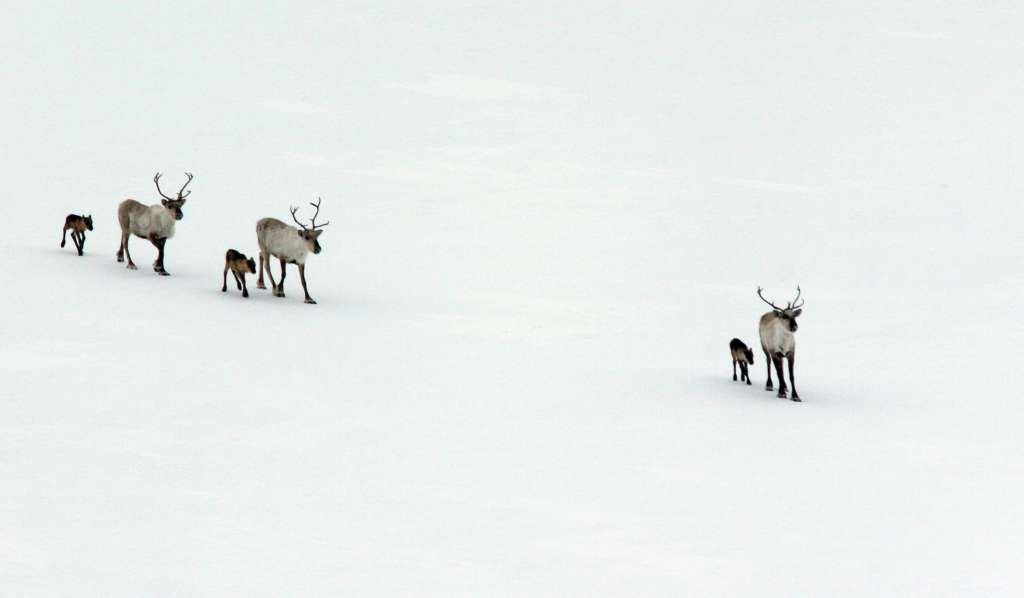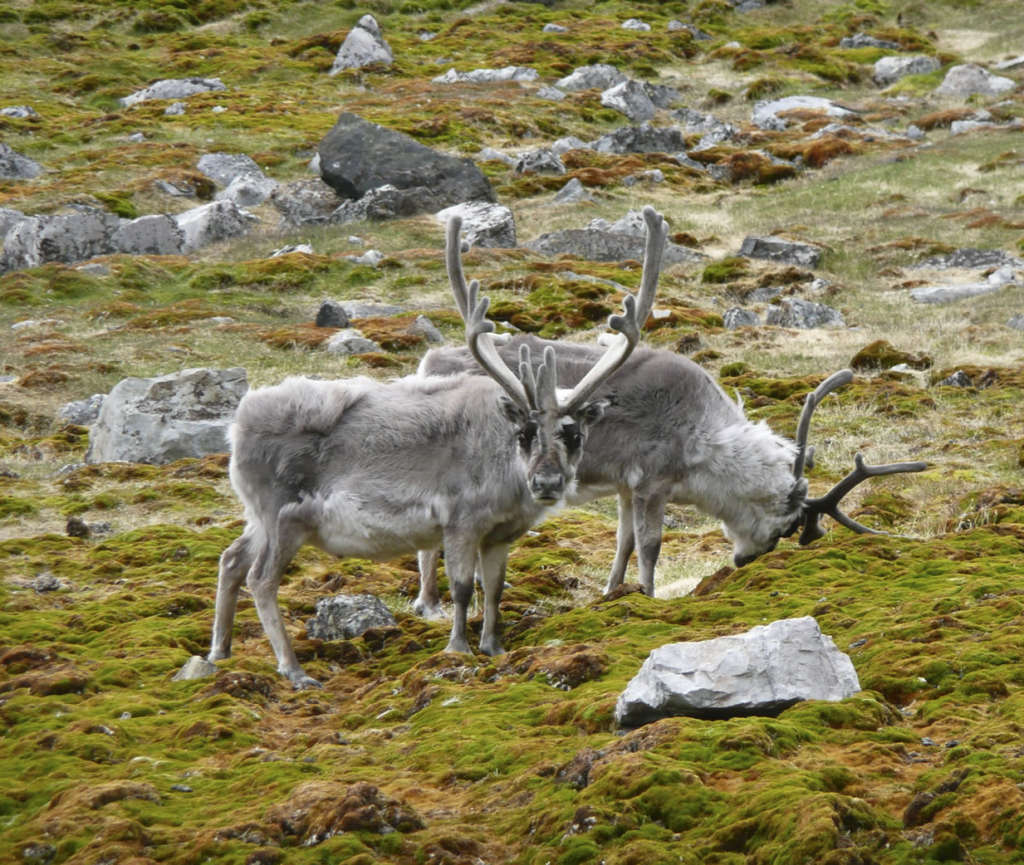The Run Down on Reindeer

by Noah Patton
When you think of deer – do you always think of Reindeer? This could be thanks to the Yuletide legends of Santa Claus, right? Apart from Rudolph and his story of overcoming the bullying of his peers, what else do we know about these creatures of the north?
In North American reindeer are called instead “caribou”. There is roughly a fifty-fifty split between the subspecies names regarding either reindeer or caribou, but the largest subspecies are called the woodland caribou. The North American word reindeer has Nordic origins, with the old word for reindeer being hreinn. [1] Der meant a wild animal of any kind, these two words were eventually combined into reindeer. Caribou instead has Canadian French origins, arising from the indigenous Mi’kmaq people. The Mi’kmaq word qalipu literally meant “snow shoveler”, named for the species habit to dig through the snow to get their food.
Reindeer are highly social creatures. Their migrations are long, with the woodland caribou migrating the furthest of any land mammal travelling approximately 5,000km a year. [2] During these migrations in spring smaller herds of reindeer combine to form massive herds of the animals. These can range in size from 50,000 to 1,000,000 animals. Once autumn arrives these herds split back into their smaller groups as the mating season arrives.

Their crowning feature is clearly their antlers. Reindeer are the only species of deer to have both male and females with antlers. They are also the largest antlers compared to their body mass of all deer species. These antlers vary in size between the subspecies of reindeer. Antlers are made of bone covered by a thick velvet. The velvet is skin covered in blood vessels that carry blood to the bone of the antlers, allowing the antlers to grow. Once the antlers have fully grown, the velvet that covers them will shed and rub off. Male reindeer will use these antlers as a symbol of status and to contest other male antlers for mates. The female reindeer will use the antlers only for status. Female reindeer with antlers gets access to the most abundant foraging areas and will breed stronger calves. [3]
Reindeer are also some of the fastest land animals in the world, reaching speeds of 60-80km/h. A reindeer that was born a day ago can outrun Usain Bolt. [4] This speed allows them to evade some of their natural predators, bears, wolves and golden eagles. Often golden eagles will prey on calves, while the wolves employ pack tactics to cut off and surround the reindeer as they are unable match the reindeer’s speed and endurance.

Reindeer will diet on lichens and grass. They are ruminants, meaning their stomach is specialised to ferment plant-matter enabling them to digest it more effectively. They are the only large mammals capable of digesting lichen. This is due to the enzyme lichenase which breaks down the lichen into simple sugars. [5] This diet is being threatened by climate change however, with longer autumns leading to more freezing rain, creating inches of ice covering their primary food source – lichen. The reindeer have no environmental adaptation to allow them to break through this ice, so they are unable to get to their food. This led to an estimated 81,000 reindeer in Russia dying. [6]
You can see reindeer in northern regions of Europe and America, as well as the Arctic and the surrounding sub-Arctic areas.
Bibliography:
- [1] American Heritage® Dictionary of the English Language, Fifth Edition.
- [2] http://www.mrnf.gouv.qc.ca/english/wildlife/maps-caribou/
- [3] Thing, Henning; Olesen, Carsten Riis; Aastrup, Peter (1986), “Antler possession by west Greenland female caribou in relation to population characteristics”, Rangifer, 6 (2): 297,
- [4] Hoare, Ben (2009). Animal Migration. London: Natural History Museum. p. 45.
- [5] Lawrence, Eleanor (2008). Henderson’s Dictionary of Biology. Pearson Benjamin Cummings Prentice Hall. pp. 363
- [6] https://www.washingtonpost.com/news/morning-mix/wp/2016/11/16/starvation-killed-80000-reindeer-after-unusual-arctic-rains-cut-off-the-animals-food-supply/

